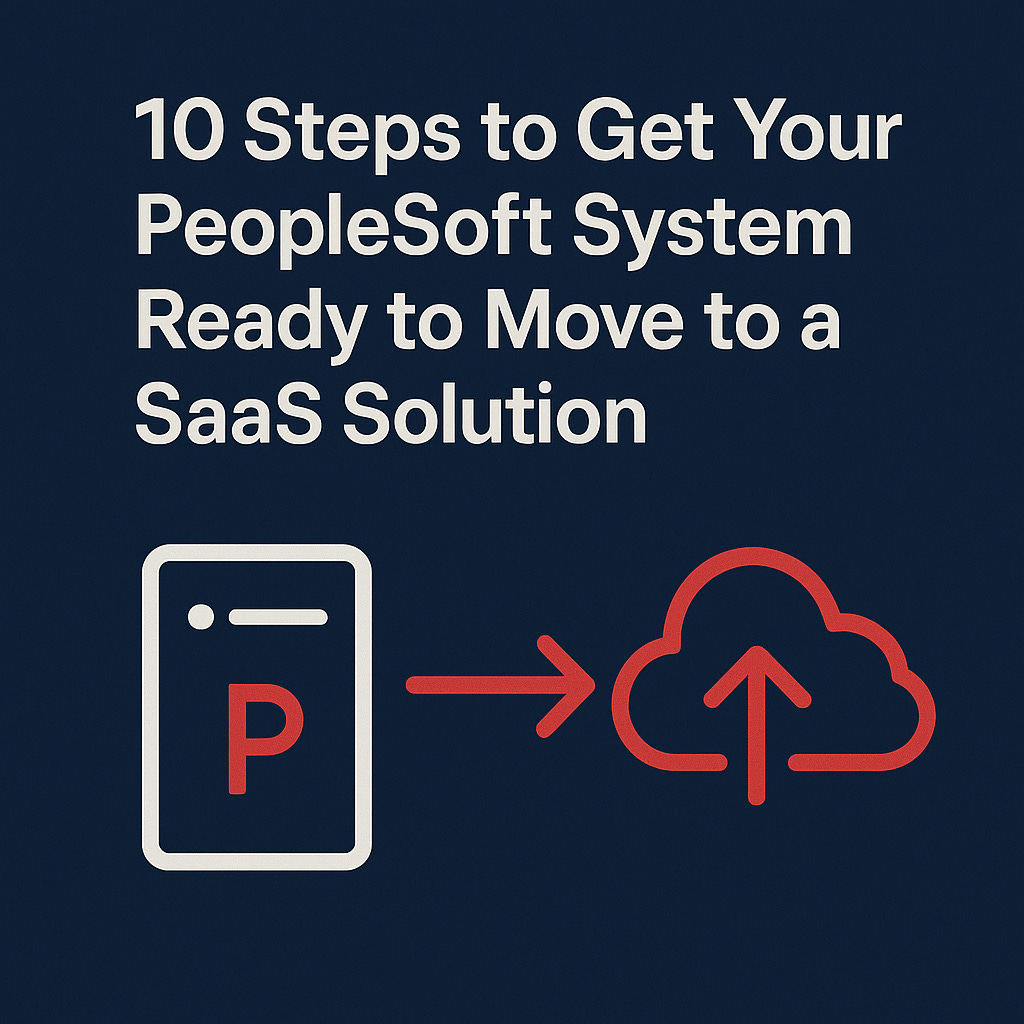10 Steps to Get Your PeopleSoft System Ready to Move to a SaaS Solution
For many organizations, PeopleSoft has been a reliable backbone for decades, powering HR, Finance, and Campus operations with flexibility that newer SaaS platforms often struggle to match. But as SaaS adoption grows, leadership teams are asking an important question: How do we prepare PeopleSoft for a future that includes SaaS without breaking what works today?
Moving to a SaaS environment isn’t just about choosing a new product. It’s about readiness: data, process, architecture, and people. Here are ten practical steps to make sure your PeopleSoft system is ready when your organization decides to take that leap.
1. Document What PeopleSoft Really Does
Before moving anywhere, you need a complete inventory of what your system actually does. Catalog business processes, integrations, bolt-ons, customizations, and reports. This becomes your “PeopleSoft blueprint”; the map that defines scope and complexity for any future SaaS transition.
2. Assess Customizations Objectively
Most SaaS systems can’t handle deep customizations. Evaluate every mod and ask: Does this provide real business value or just reflect old habits? This exercise often uncovers hidden inefficiencies and helps decide what can be standardized before migration.
3. Clean and Govern Your Data
SaaS solutions live or die by data quality. Now’s the time to clean up duplicates, standardize key fields, and archive stale records. Establish data governance so that when you migrate, you’re not taking the mess with you.
4. Modernize Integrations
Replace file-based or point-to-point integrations with API-driven or event-based connections. This shift not only simplifies migration but also sets you up for hybrid coexistence, where PeopleSoft and SaaS solutions share data seamlessly.
5. Evaluate Business Processes
You can use this opportunity to reimagine processes. SaaS migration is the perfect moment to eliminate unnecessary approvals, automate manual steps, and align workflows with modern best practices.
6. Upgrade to the Latest PeopleTools
If you’re more than one version behind, upgrade now. The newer PeopleTools releases include modern integration capabilities, improved APIs, and cloud-readiness features that will make your system easier to lift, connect, or retire in phases.
7. Establish a Hybrid ERP Strategy
Few organizations move 100% to SaaS overnight. Develop a hybrid ERP roadmap. Here, you can define which functions will stay on PeopleSoft and which will transition to SaaS. This reduces risk and helps maintain operational continuity.
8. Invest in Cloud Infrastructure Experience
Even if you plan to exit PeopleSoft long-term, moving it to cloud infrastructure (like GCP or OCI) first gives your team hands-on experience with automation, scalability, and observability. These are skills that directly translate to managing SaaS environments.
9. Train and Re-Skill Your Team
Your people are part of the migration. Begin cross-training PeopleSoft admins, developers, and analysts in integration platforms, SaaS administration, and data management. This investment prevents knowledge gaps during transition.
10. Create a Communication and Change Plan
Finally, remember this: SaaS transitions are as much cultural as technical. Engage stakeholders early, explain what’s changing, and celebrate incremental wins. A strong communication plan reduces fear, builds trust, and keeps momentum.
Closing Thought
Moving from PeopleSoft to SaaS isn’t a rip-and-replace project; it’s an evolution. Each step you take to modernize PeopleSoft today makes your system leaner, your data cleaner, and your people more prepared for what’s next. Whether you’re staying hybrid or going all-in on SaaS, readiness is your most significant competitive advantage.



